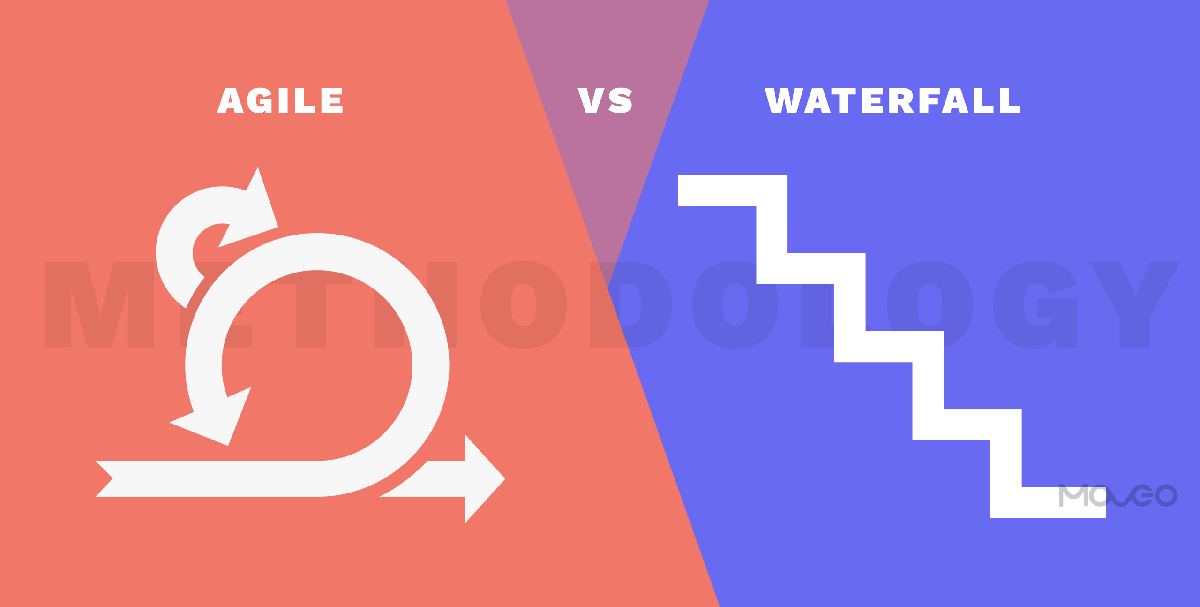Recent statistics show that organizations that conduct business in the United Kingdom know the power of what mobile apps bring to the table. In fact, application development in the UK has a market size of £21.8 billion.
Mobile apps are superior tools to better engage your customers and boost revenue.
The most common app development methodologies are Agile and Waterfall. Both will help you create the mobile apps your organization needs to grow your business and dazzle customers. However, there is a distinction between these methodologies.
Keep reading to discover the key differences.
Mobile App Development Methodologies
The Waterfall method breaks down the app development, placing them in isolated phases. These phases flow into each other.
Meanwhile, the Agile method advocates iterative development cycles. In simple terms, multiple lifecycle phases could run congruently or in parallel.
All mobile app development lifecycles have common aspects, no matter if you are working with a Waterfall or Agile-based method. All lifecycles include:
- Gathering requirements
- Analysis
- Design
- Development
- Implementation
- Testing
- Verification
- Deployment
- Maintenance
With a Waterfall model, though, a development team cannot move to the next phase of their process until they complete their current phase.
The Agile model is for developers that understand things will not always go according to their plan. Therefore, with Agile, developers continually work to deliver mobile apps to their clients, even if it is not 100% complete.
When Should You Choose Waterfall Over Agile?
If you were to build a house in the wrong order, it would not stand. For instance, you cannot create the foundation last, it must come first.
When you have a mobile app that is highly unlikely to change between the development and delivery stages, the waterfall methodology will work well.
Mobile App Development Tips
Before developing a mobile app, there are considerations to make before you invest time and money in it. It may seem simple at the beginning, the idea you have in your head. However, once you work with a team to develop it, things could become complex quickly.
First, you must decide which operating system you want your mobile app for. There are two, mainly, which are Android and iOS. Usually, you will want a cross-functional platform, but if you would rather it be native to one kind, you will need to decide upfront.
Know Your Audience
While the mobile app could be your idea, you are developing it for other people. You will want to keep your customers’ persona in mind. For a mobile app to be successful, the user must find it helpful.
This is a good time to see what else is out there, too. If you have competitors, you will want to see how your mobile app will stack up once it is complete. Your mobile app should have a uniqueness to it or something that your competitors could never compare to.
Plan Your Design
The way you design the mobile app is another key to its success. The interface must be user-friendly. If it is not user-friendly, a customer will not want to use it.
Also, mobile apps must be secure for a customer to feel comfortable using them on their phone. Especially when a mobile app will contain sensitive information. Consider the privacy settings and data protection features you can offer customers who download it.
App Development Methodologies
Now that you better understand the distinct differences between the waterfall and agile methodologies, you have a better sense of what will work well for you. App development methodologies are unique to your needs.
Builder.ai understands how important it is for you to make your vision a reality.
While mobile app development can seem complex, Builder.ai is on a mission to make it easier for customers just like you! No matter your background, everyone should be able to create mobile apps to help their businesses grow.
